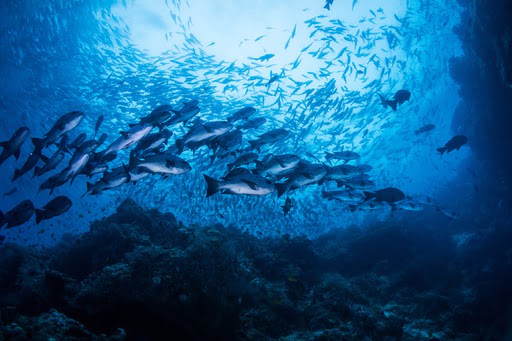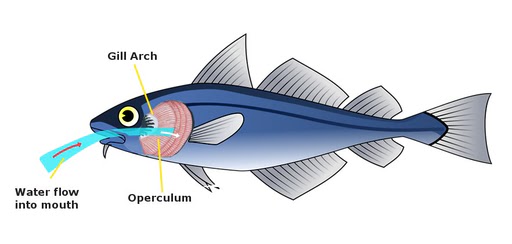Turtles intake food through their mouth, hold it firmly between their tongue and the upper part of their mouth, and then expel the water out.
Turtles have been swimming in Earth’s bodies of water since long before humans existed. These ancient and peculiar creatures have a wide range of habitats; some live on land, others live exclusively underwater, while some turtles prefer both land and water environments. However, these reptiles (not everything that resides in water is a fish) face a unique challenge – how to eat without swallowing seawater?
Eating underwater cannot be an easy task. When they open their mouths to catch prey, water rushes in. Fortunately, evolutionary processes ensure that living organisms are well-adapted to their habitats and ecological niches. Therefore, all aquatic animals have developed mechanisms that allow them to feed without taking in large amounts of water.
How Do Fish Feed Underwater?
Before we delve into how turtles manage to eat without filling up with water, let’s discuss fish and how they handle feeding in water.
For fish, which are equipped with gills, water is equivalent to air for us. Just as we don’t have to consciously swallow air when we eat, fish have adapted perfectly to life in water.
 Do fish consume a significant amount of water while eating? (Photo Credits:Song Heming/Shutterstock)
Do fish consume a significant amount of water while eating? (Photo Credits:Song Heming/Shutterstock)
Unlike animals with lungs, fish perform both breathing and feeding through a single opening. A fish opens its mouth, allowing water to enter. This water, enriched with oxygen, is directed towards the gills, the organ that enables fish to breathe. The oxygen-rich water passes over the gills, where capillaries containing oxygen-depleted blood absorb the oxygen from the water. The water is then expelled through the gill flap.
Located in front of the gills are bony structures called gill rakers. These structures act as filters, capturing food such as microscopic plankton or larger prey from the water. The food is then directed towards the esophagus, where the digestion process begins.

Simply Spit It Out
There are seven species of marine or sea turtles – the Loggerhead turtle, Kemp’s Ridley turtle, Olive Ridley turtle, Leatherback turtle, Green turtle, Hawksbill turtle, and the Flatback sea turtle. They spend their lives roaming the untamed waters of the world, feeding on algae, sea sponges, sea cucumbers, and a variety of jellyfish. Although they sleep and eat in the water, they need to come up to the surface to breathe air. Once their oxygen supply is replenished, they dive back down with the stored oxygen in their lungs. When sea turtles venture out to eat, they prevent water from entering their windpipe, similar to how we do when we eat or drink.
Sea turtles have a unique way of eating underwater without swallowing too much water. When they eat, they extend their head and neck to suck in the food and water into their mouth, similar to slurping noodles. This sucking motion also helps keep the prey inside their mouth by expanding the back of the throat and lowering the bottom of the throat. Once the food is in their mouth, turtles expel the water they took in by raising their tongue and compressing their mouth, allowing the water to escape through a small gap between their mouth and nostrils.
However, not all the water is expelled because turtles need it for swallowing. It has been observed that turtles cannot swallow food on land, indicating the importance of water in the swallowing process. One possible reason for this is the reduced salivary glands in turtles, which may not provide enough water lubrication for swallowing.
To swallow the food, turtles expand the backs of their throat, and the food, now called the “bolus,” moves down the esophagus. In the esophagus, there are conical projections called papillae that prevent the bolus from moving back into the mouth. These papillae also act as a filter, squeezing out excess water as the bolus moves down the esophagus, ensuring that the turtle does not ingest too much salty seawater.
Sea turtles need to get rid of excess water while eating because drinking salty water every time they feed would be harmful. The high concentration of ions in saltwater can disturb the delicate balance required for the chemical environment of proteins and DNA in the cells of the turtles. To stay hydrated, sea turtles prefer to drink freshwater or water with a slightly lower mineral load. They can swallow a significant amount of water in one drink, which can last them for a while. Additionally, sea turtles also obtain water from the food they eat.
Life is truly amazing. If you observe any part of the world, you will find that life has adapted in the most peculiar and astonishing ways.
In his book titled “The World Without Us,” the acclaimed journalist Alan Weisman discusses what life would be like in the absence of humans. He states, “Let’s be honest: who could have foreseen the existence of turtles? Who could have imagined that an organism would essentially invert itself, retracting its shoulder girdle into its ribs to form a carapace? If turtles didn’t exist, no vertebrate biologist would have proposed such a phenomenon – they would have been ridiculed. The only certain prediction we can make is that life will persist. And it will be fascinating.”
